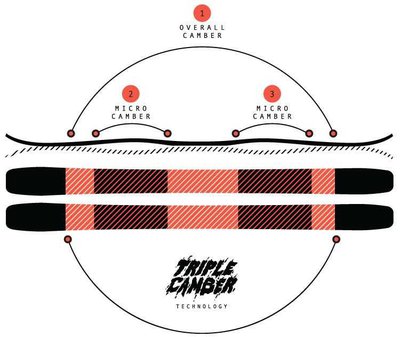ramlaKramlaJI don't really understand why and how does it do these things. My skis have stiff camber under/behind/front of binding just like the triple cmaber. Do the more points of contact really matter when you are laying in to a turn? I thought the whole camber lenght is in contact with snow when laying. Someone pls increase my knowledge on ski shape and carving and this triple camber because it still sounds like a placebo.
Take your skis, put them base to base, and press on the camber pocket. Notice how the skis flatten out underfoot? The Deathwish doesn’t do this.
The Deathwish has a single large overall camber with two extra pockets towards the end of the camber before the rocker starts at the tip and tail. Hence, Triple Camber. It’s way easier to see rather than visualize, so head over to the moment website for camber profile pictures.
Camber gives helps skis pop from turn to turn, and also acts similar to how suspension on a bike would act when you are riding down a rough trail. The smaller camber pockets that are on the deathwish are designed to be much stiffer than the larger camber pocket, giving them a little bit more suspension than a traditionally cambered ski, helping to smooth out the ride in funky snow.
If you took a traditionally mounted ski and turned it over as if you were carving, you’ll notice you’re making contact with the ground at the widest part of the tip and tail. So if you slip your edge, you’re out of luck and might wipe out completely.
Now if you take a Deathwish and lean it over, the edge takes on an almost S-shape in the snow because of the each section of camber, allowing the ski to have more chances to bite into the snow. Definitely boosts confidence in your edge hold even on hardpack
It can definitely be tricky to wrap your head around, so if you’re ever in the Reno area, come check out the factory and maybe even demo some skis in the winter













